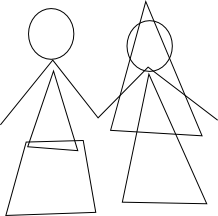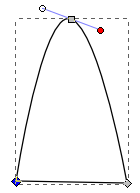Two weekends ago, I attended NHS Hack Scotland with my husband. Well, he attended the whole weekend and I turned up for the Sunday. I really wish I’d been there for the full weekend!
The weekend event took place at the Edinburgh Tech Cube, an older university building that has been re-imagined as a first class technology startup space. I’d never been in the building before but I’d walked past it dozens upon dozens of times in my years at uni. The space that the NHS Hack Scotland was taking up was only very recently opened and was yet unfinished. Cables hung from the ceiling in a way that I could only describe as “a bit steampunk” but the paint was fresh, there were power sockets everywhere, and the wifi was strong!
When I arrived at the end of the Saturday, I sat quietly in the corner until an organiser (whose name I can’t recall) approached and asked if I’d just arrived. When I said I had and asked how the event was progressing, he waved me over to where my husband was and encouraged me to join the group. I quickly learned that my husband’s group was creating a One Website to Rule Them All for the NHS, pulling in local information about NHS24, GPs and A&Es and such, so that a user could quickly get contact details for the help they need. I must say that I was a bit disheartened to find that such a tool was necessary in the first place, as I had assumed that the NHS24 site was already doing precisely that (See NOTE 1 below).
That evening, I joined everyone in the pub and then on to Illegal Jacks where I chatted with a couple other attendees at length about Basic English and restricted vocabularies to increase consistency in patient pamphlets (See NOTE 2 below).
Because I was only there for the second day, most of what I learned about the other groups came during the final presentations. I watched many groups describing solutions such as an app to record anxiety levels (to contrast with the current pen-and-paper solution), an app to direct ambulance drivers to the nearest GP, pharmacy, or A&E (since they are already at the house with the patient, it doesn’t strictly send them out of their way to bring a not-too-ill patient to their GP instead of to the A&E), and a game that encourages patients to continue on with a new regimen. All of them were great ideas to solve problems that I didn’t know the NHS even had!
The folks that were there were quite split between developers and NHS staff. It was great having the opportunity to show those who are not particularly technical how problems can be solved relatively quickly and easily with a bit of clever code. I, myself, am not a coder, nor was I NHS, so I provided what services I could — I drew a wee logo and helped facilitate conversation. I would love to attend an event like this again in the near future, especially knowing that it doesn’t matter that I’m not a stellar programmer.
Yes, that is all.
NOTE 1: The poor information architecture of the NHS24 website, in contrast to the webpage that our team put together, made me very interested in learning more about UI design. It’s something I’ve always wanted to get involved in but, without an academic qualification in the subject, few will trust my suggestions. So, driven, I’ve signed up for a Human Computer Interaction course on coursera.org. Wish me luck!
NOTE 2: A future NHS hack project might be creating a text editor for the NHS that restricts the vocabulary to only words that a child about 10 years old could read and understand. If a user of the text editor uses a word that is not in the dictionary, it underlines the word and suggests simple synonyms. Because medicine has a lot of required terminology, a word can be “excused” provided it is defined in a glossary written in simple English at the back. This would ensure that the majority of patients could understand what is written, and it would encourage more consistent writing across practices.


